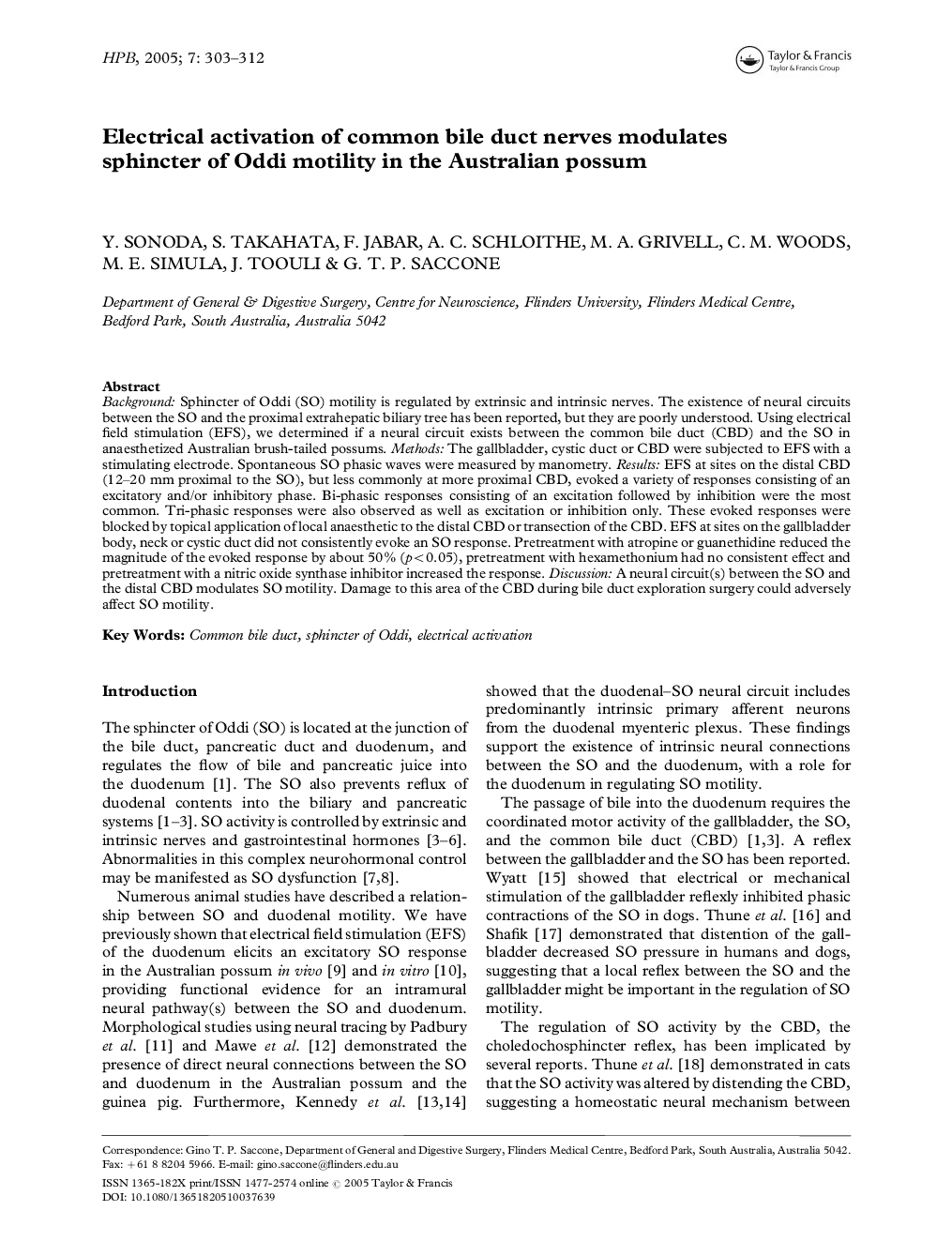| Article ID | Journal | Published Year | Pages | File Type |
|---|---|---|---|---|
| 9239330 | HPB | 2005 | 10 Pages |
Abstract
Background: Sphincter of Oddi (SO) motility is regulated by extrinsic and intrinsic nerves. The existence of neural circuits between the SO and the proximal extrahepatic biliary tree has been reported, but they are poorly understood. Using electrical field stimulation (EFS), we determined if a neural circuit exists between the common bile duct (CBD) and the SO in anaesthetized Australian brushâtailed possums. Methods: The gallbladder, cystic duct or CBD were subjected to EFS with a stimulating electrode. Spontaneous SO phasic waves were measured by manometry. Results: EFS at sites on the distal CBD (12-20Â mm proximal to the SO), but less commonly at more proximal CBD, evoked a variety of responses consisting of an excitatory and/or inhibitory phase. Biâphasic responses consisting of an excitation followed by inhibition were the most common. Triâphasic responses were also observed as well as excitation or inhibition only. These evoked responses were blocked by topical application of local anaesthetic to the distal CBD or transection of the CBD. EFS at sites on the gallbladder body, neck or cystic duct did not consistently evoke an SO response. Pretreatment with atropine or guanethidine reduced the magnitude of the evoked response by about 50% (p<0.05), pretreatment with hexamethonium had no consistent effect and pretreatment with a nitric oxide synthase inhibitor increased the response. Discussion: A neural circuit(s) between the SO and the distal CBD modulates SO motility. Damage to this area of the CBD during bile duct exploration surgery could adversely affect SO motility.
Related Topics
Health Sciences
Medicine and Dentistry
Endocrinology, Diabetes and Metabolism
Authors
Y. Sonoda, S. Takahata, F. Jabar, A.C. Schloithe, M.A. Grivell, C.M. Woods, M.E. Simula, J. Toouli, G.T.P. Saccone,
